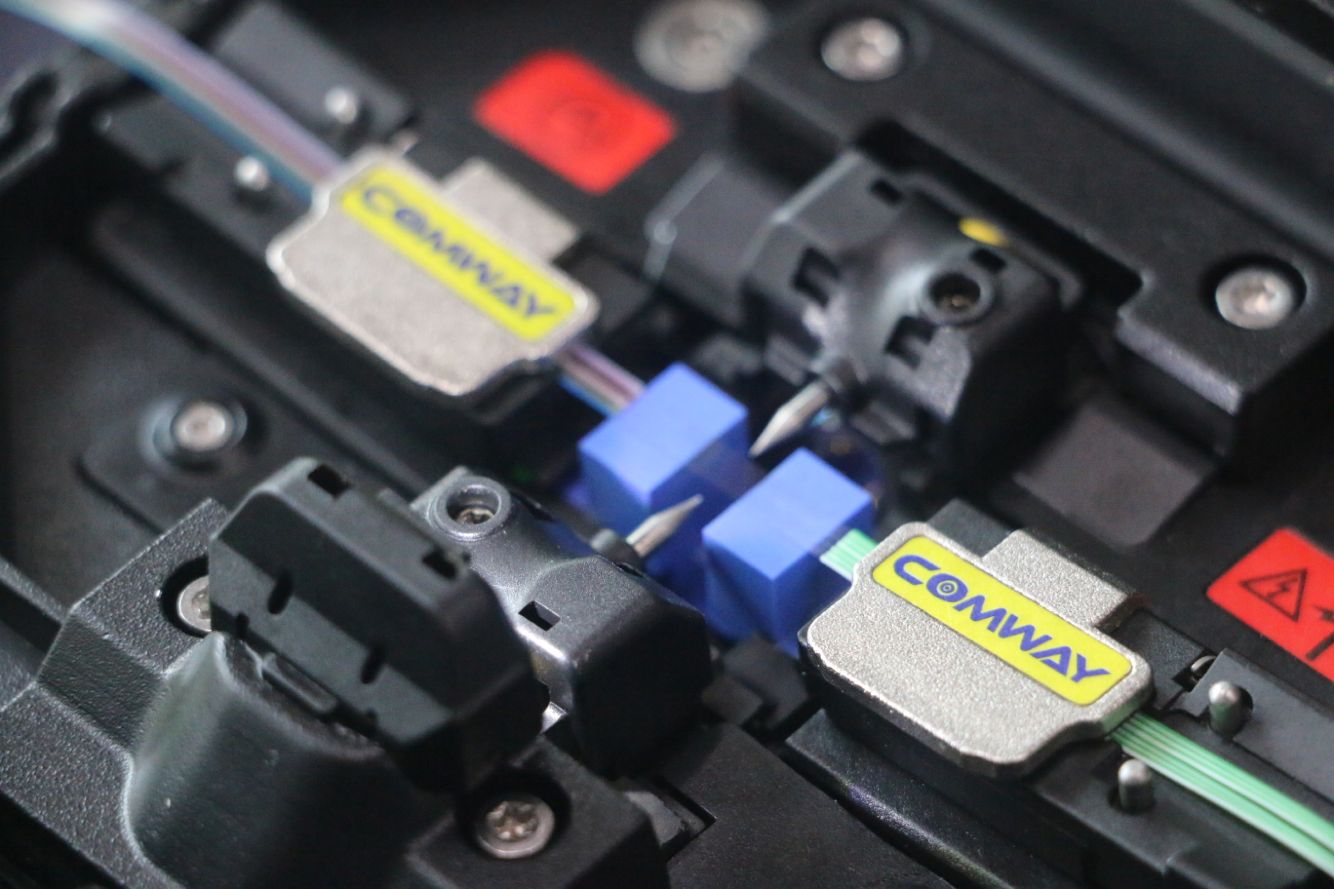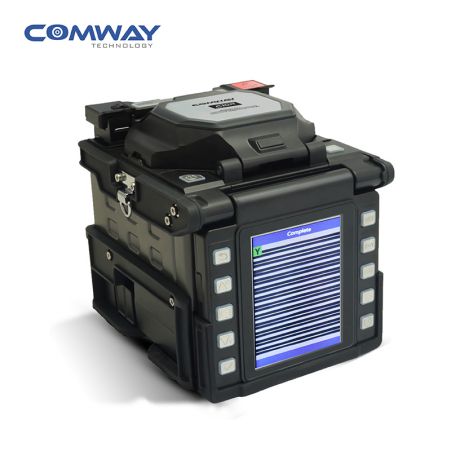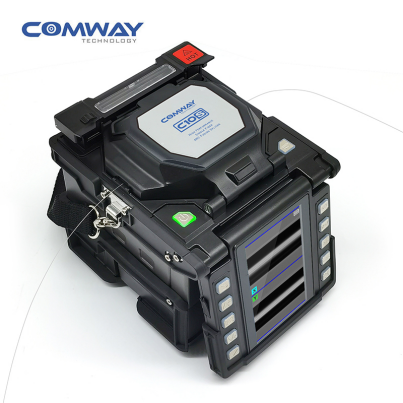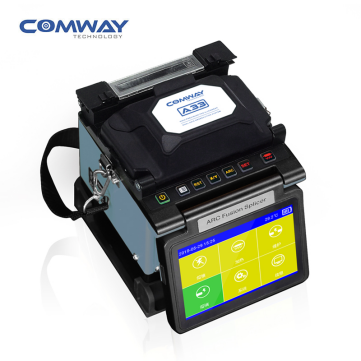
The fusion splicer is used to splice two optical fibers end-to-end through fusion splicing. It is an indispensable tool for the installation of optical fiber OSP and indoor cable network.
There are many types of fusion splicers available, with different functions, functions and costs. There are hundreds of options to choose from, and this task can become very difficult when choosing the right fiber fusion splicer for the job. In this article, we will discuss how to find the best fusion splicer for your application from the following aspects.
Single Fiber Fusion Splicer VS. Mass Fusion Splicer
Single fiber fusion splicers and mass or ribbon fusion splicers are the two main types of fusion splicers on the market. You should choose the appropriate one from them according to your specific application.
Single Fiber Fusion Splicer
Single fiber splicers usually splice 250 micron fiber, but can also hold 900 micron jacketed fiber, flat drop cable and splice on connectors (also known as splice-on-connectors) used mostly for FTTH applications as well. One piece of fiber is stripped, cleaned, cleaved then inserted into the fiber holder. Another fiber repeats the same process to lay in the opposite fiber holder. Most newer single fusion splicer models can splice in less than ten seconds and estimate attenuation (loss of light). Of course this is only an estimation and the fiber should be tested more accurately with an OTDR.
Extralink COMWAY Single Fiber Fusion Splicer | Extralink COMWAY Single Fiber Fusion Splicer |
| . |
Mass Fusion Splicer
Mass or ribbon splicers can splice 1 to 12 fibers all at once. The fiber holders determine the number of fibers you can splice at once. Mass splicers are not nearly as popular as the single fiber splicers, but if used on cable where more than one fiber needs to be spliced they are extremely efficient. When fiber counts of over 96 are needed, there can be up to a 65% savings on per splice costs. Let’s say on average a single fiber splice costs $25 and a ribbon splice is $110 each. At a location that needs 144 splices, the single fiber splicer would run a cost of $3600. A ribbon splicer would only perform 12 splices at a total of $1320. The following picture is a USA COMWAY mass fusion splicer.

Core Alignment Fusion Splicer VS. Cladding Alignment Fusion Splicer
Currently, there are two aligning system used for fusion splicer which is core alignment system and cladding alignment system.
Core Alignment Fusion Splicer
Core alignment splicing is currently the most commonly used fusion splicing technology. The core alignment fusion splicer uses a combination of image and light detection systems to "see" the fiber core to measure and monitor the core position during the alignment process. This provides precise fiber alignment, resulting in a typical splice loss of only 0.02dB. Compared with cladding alignment, it is more expensive, more powerful, more flexible, and insensitive to changes in cables and the environment. For a long time, due to its high precision and reliability, core alignment fusion splicers have been the preferred method for CATV installation, backbone networks, special fiber applications and optical component manufacturing.
The core alignment fusion splicer generally has six motors, a propulsion motor, an alignment motor, and a focus motor. Compared with the cladding alignment fusion splicer, it adds two more focusing machines to aim at the core and achieve core alignment.
Cladding Alignment Fusion Splicer
More basic fusion splicers use cladding alignment to align the fibers for fusion splicing. The optical fibers are located in a bracket or V-shaped groove, and are arranged "physically" according to the outer diameter of the optical fiber cladding. The fiber core adjusts inwardly and outwardly. The advantage of this method is that the required technical cost is low, and the alignment and splicing speed are fast, so it is still used for low-cost on-site welding machines and ribbon welding machines. However, because the outer diameters are aligned, it does not mean that the cores will be perfectly aligned. Cladding-aligned splicers usually produce higher loss splicers and lack the functionality and flexibility of high-end splicers. The following picture shows the Fujikura 41S cladding alignment fusion splicer.
![]()
Compared with the 6-motor core alignment machine, it has two less focus motors, which cannot achieve core alignment, and the splicing loss is higher.
Other Considerations for Choosing the Right Fusion Splicer
In addition to the above two points, there are other common sense about fusion splicers, which may also help you make a decision. In the market, the famous brands of welding are Fujikura, Sumitomo and Furukawa from Japan, INNO and Ilsintech from South Korea and USA COMWAY. Among them, Fujikura is the most expensive and best in the world.These brands have truly stable core alignment and ribbon machine technology.
Most machines in China cannot truly achieve core alignment, instability, or the splicing loss is too high.
Usually, the price of Japan's fusion splicer is more than 7,000 US dollars, the price of Korea's fusion splicer is more than 5,000 US dollars, and the price of China's fusion splicer is more than 3,000 US dollars. So far, the new Sumitomo TYPE-81C Fusion Splicer has the fastest welding speed.
Conclusion
When choosing a fusion splicer, all the factors mentioned in this article should be considered. Since there are so many fusion splicer suppliers, choosing a reliable company becomes particularly important.
Hong Kong Honserv limited is a Hong Kong optical communications company that can help you determine the most suitable fusion splicer. Their support staff will help narrow the range of equipment options based on the application and budget to meet your specific needs.


